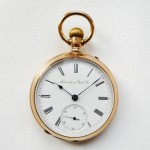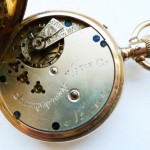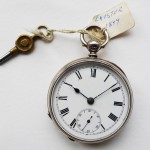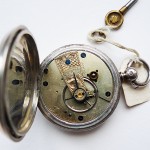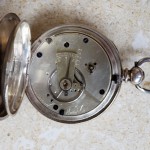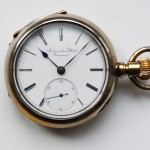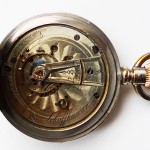After Jones, the next IWC movements, from the late 1870s, were Calibres 18-26, which were known as “Seeland” movements. In 1875 the company filed for bankruptcy and Jones was forced to relinquish control of the company. Another American, Frederick Seeland, became CEO and began producing different movements in the late 1870s. Those generally were less expensive than the Jones models and often were sold to the U.K. market.
While Calibres 18 through 26 were attributed to Seeland, some historians believe that the only Seelands were the so-called “Boston” models, Calibres 24, 25 and 26. Those references had full plates and few jewels. No one knows why these references were called “Boston”.
It is commonly believed that the other calibres, even with lower numbers, may have been produced later. Recent research of IWC archives has found three-quarter plate designs from 1878, which still was the Seeland era. Most believe that lower number calibres, such as Calibre 22, were produced later than the higher-numbers the Boston calibres, but still are Seelands.
Shown here is a rare Calibre 22 Seeland, with three-quarter plate design. As mentioned above, it presumably was produced at the end of the Seeland era and after Calibres 24, 25 and 26. Noteworthy is the fanciful engraved script with the name International Watch Co. on the top plate.
This is the most common Seeland, Calibre 24. It was a less expensive watch; it is likely that all examples were cased in silver, and the movements are relatively simple, with few jewels and both key-winding and key-setting. Most or all examples were sold in the U.K. market.
Calibre 25, shown here, has a similar design to Calibre 24 but is larger. It is seldom found and this example has a movement with only minimal decoration,
Calibre 26, a rare Seeland “Boston” model, is an enigma.It has the same basic movement design as the Calibres 24 and 25, but is highly decorated. It also has the unique characteristic of being both key-wound or crown wound, as the user chooses. Presumably, as a short-lived marketing strategy it was an attempt to upgrade the very basic full-plate Seeland models.


